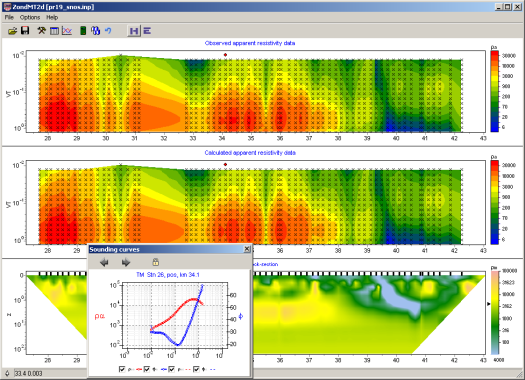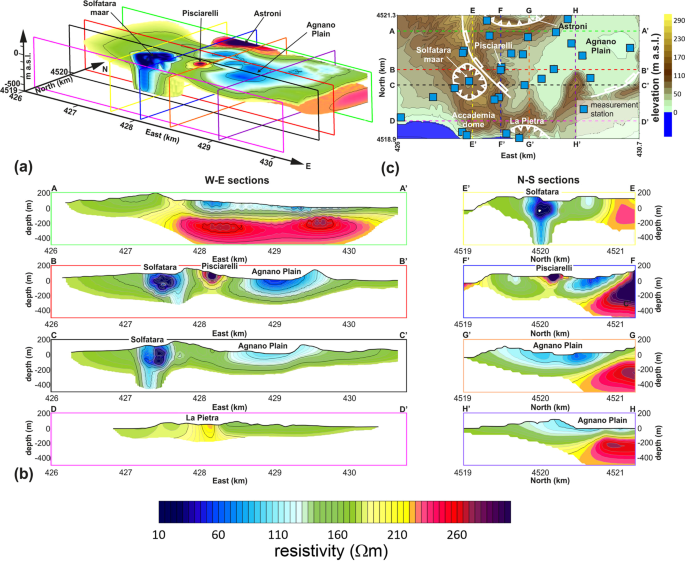- 3d Resistivity Inversion Software Downloads Download
- 3d Resistivity Inversion Software Downloads
- 3d Resistivity Inversion Software Downloads Pc
IX1D inversion software determines a 1D-model of subsurface resisitivity corresponding to the apparent resistivity measured by a vertical electrical sounding, or the changes in the secondary magnetic field measured by a TDEM sounding. 1D inversion of SEV and TDEM sounding. 2D interpolation of 1D-sounding with IX1Dv3 software version. RES2DINV and RES3DINV software.

AGI USA +1 512.335.3338 | AGI EUROPE +34 913 056 477 |
|
| AGI Homepage | SuperSting | StingR1 MiniSting | EarthImager | UserGroup registration | Public Files |
AGI Software download
Here is a summary of the software products and utilities available from AGI.Some products are freeware and others are limited demo versions which canbe upgraded to full functionality by purchasing a license from us.
Feel free to use these links to download and test the software!
Note on handling PDF files:
Since PDF (Acrobat) files are frequently used for software manuals etc they appear on ourpages as links. In some browsers the link will be opened inside the browser itself using aPDF plug-in. This only happens after the document file has been completely downloaded bythe browser into a temp directory. After you leave the document page the downloaded filewill be impossible to find on your hard disk so the next time around you must download it again.
We therefore recommend that you use this procedure for PDF links instead:
1. Right click on the link.
2. In the pop-up menu select 'Save Target As'
3. You will be asked to enter the directory where the file is to be saved.
4. When the download is complete open the file in Acrobat Reader.
3d Resistivity Inversion Software Downloads Download
Demo file available for downloadFull version uses hardware key
1D Resistivity software | |||
| AGI EarthImager 1D | Win2000 & WinXP and later | Demo | Use EarthImager 1D to interpret 1D vertical electrical sounding (VES) resistivity curves created with Schlumberger, Wenner and dipole-dipole electrode arrays. |
2D Resistivity software | |||
| AGI EarthImager 2D | Win98, WinME, WinNT, Win2000 & WinXP | Demo | The EarthImager 2D is used to interpret 2D resistivity profiles created with any electrode array, recorded with electrodes in one plane, i.e. on a line on the surface, between two or more parallell bore holes, or between bore hole and surface. Any array or mixed data from Schlumberger, pole-pole, pole-dipole, dipole-dipole or Wenner electrode arrays are possible to invert. A special 'Survey Planner' allows the user to enter a geological model and run a virutal survey and then invert the virtual data to see if the objective of the survey can be met. |
3D Resistivity software | |||
| AGI EarthImager 3D | Win98, WinME, WinNT, Win2000 & WinXP | Demo | EarthImager 3D will automatically determine a three dimensional resistivity model for the subsurface using the data obtained from a 3D electrical imaging survey with the electrodes arranged in boreholes and/or on the surface and presents a 3D volume of inverted resistivity data with advanced volume rendering technique. The final resistivity or IP image-volume can be rotated in any orientation, zoomed in and out, and translated to anywhere inside the image window in order to see the volume of interest in detail. Colors representing areas of less interest can be made transparent so that the shape of a pollution plume, for example, can be visible. With EarthImager 3D, resistivity inversion can be as easy as two steps: Read Data and Start Inversion with only a few mouse clicks. |

3d Resistivity Inversion Software Downloads
| CONTACT US +1.512.335.3338 (US+International) +34.913 056 477 (EMEA and Latin America) 2121 Geoscience Drive Austin, Texas 78726 Hours: 8:30a - 5p CST (M-F) PRODUCTS CASE HISTORIES RESOURCES RENTALS DISTRIBUTORS FINANCING |
3d Resistivity Inversion Software Downloads Pc
RES2DINV software
For Windows 98/Me/2000/NT/XP
Supports on land, underwater and cross-borehole surveys
Supports the Wenner (alpha,beta,gamma), Wenner-Schlumberger, pole-pole, pole-dipole, inline dipole-dipole, equatorial dipole-dipole, gradient and non-conventional arrays.
Supports exact and approximate least-squares optimisation methods
Supports smooth and sharp constrasts inversions
Supports up to 16000 electrodes and 21000 data points on computers with 1GB RAM
Seamless inversion of very long survey lines using sparse inversion techniques
(RES2DINV only license includes limited used of RES3DINV 3D inversion program)
Two-dimensional (2D) electrical imaging surveys are now widely used to map areas of moderately complex geology where conventional 1D resistivity sounding and profiling techniques are inadequate. The results from such surveys are usually plotted in the form of a pseudosection (Figure 1a) which gives an approximate but distorted picture of the subsurface geology.
The RES2DINV program uses the smoothness-constrained least-squares method inversion technique to produce a 2D model of the subsurface from the apparent resistivity data alone. It is completely automatic and the user does not even have to supply a starting model. This program has been optimised for the inversion of large data sets. The use of available memory is optimised so as to reduce the computer time by minimising disk swapping. On a Pentium based microcomputer, the inversion of a single pseudosection is usually completed within minutes. Four different techniques for topographic modelling are available in this program. Together with the free 2D forward modeling program RES2DMOD, it forms a complete 2D resistivity forward modeling and inversion package.
The program will automatically choose the optimum inversion parameters for a particular data set. However, the parameters which affects the inversion process can be modified by the user. Three different variations of the least-squares method are provided; a very fast quasi-Newton method, a slower but more accurate Gauss-Newton method, and a moderately fast hybrid technique which incorporates the advantages of the quasi-Newton and Gauss-Newton methods. The smoothing filter can be adjusted to emphasize resistivity variations in the vertical or horizontal directions. Two different variations of the smoothness constrained least-squares method are provided; one optimised for areas where the subsurface resistivity varies in a smooth manner (such as chemical plumes), and another optimised for areas with sharp boundaries (such as massive ore bodies). A robust data inversion option is also available to reduce the effect of noisy data points. Resistivity information from borehole and other sources can also be included to constrain the inversion process.
The figure below shows an example from an electrical imaging survey in an area with fairly complex subsurface geology and significant surface topography. This survey was carried out across a circular mound which is thought to contain some important Irish archaeological burial chambers (Waddell, J. and Barton, K, 1995, Seeing beneath Rathcroghan. Archaeology Ireland, Vol. 9, No. 1, 38-41.). The inversion of this data set, which has 67 electrode positions and 339 data points, took about 81seconds on a 266 MHz Pentium II computer.